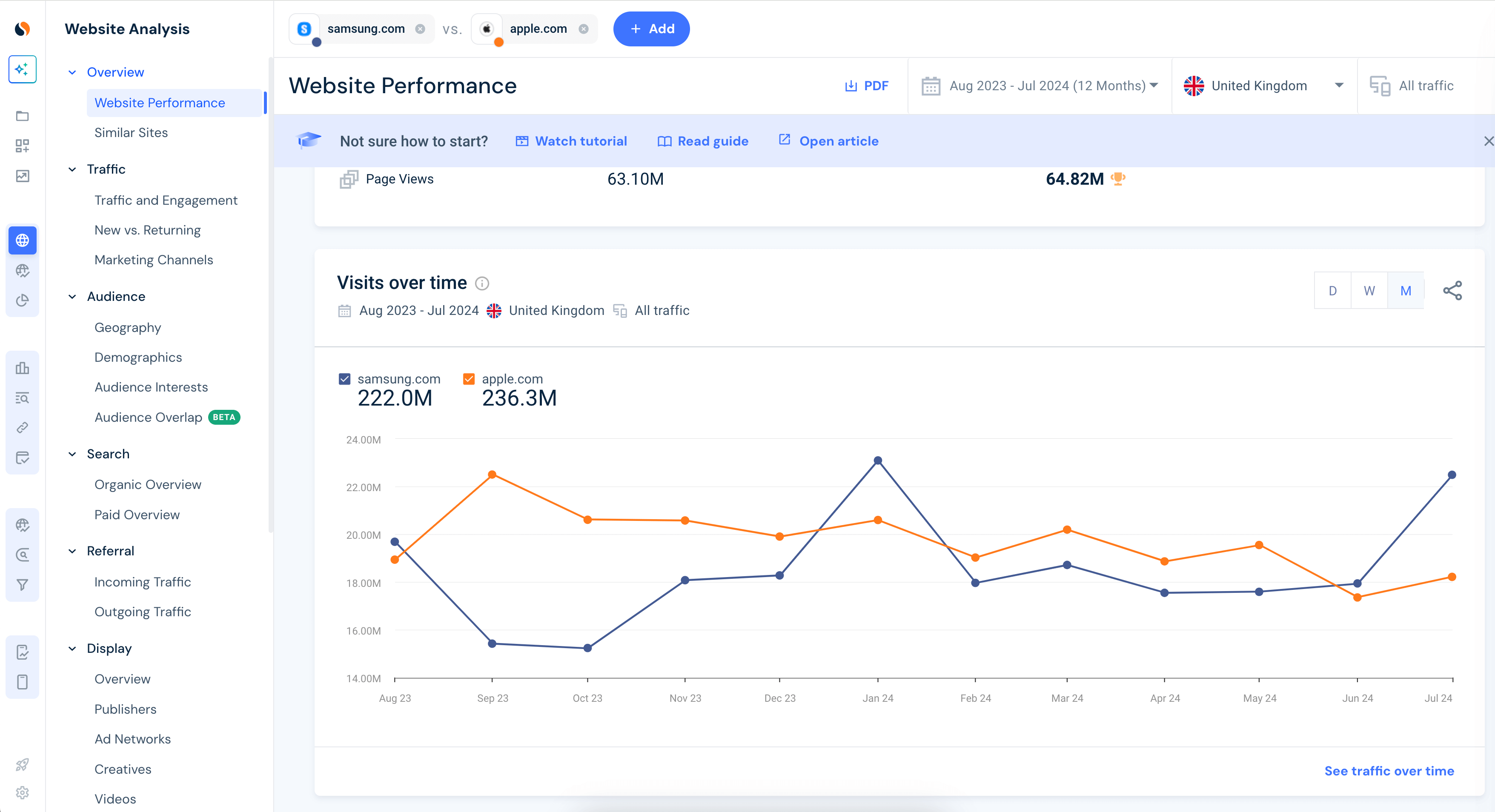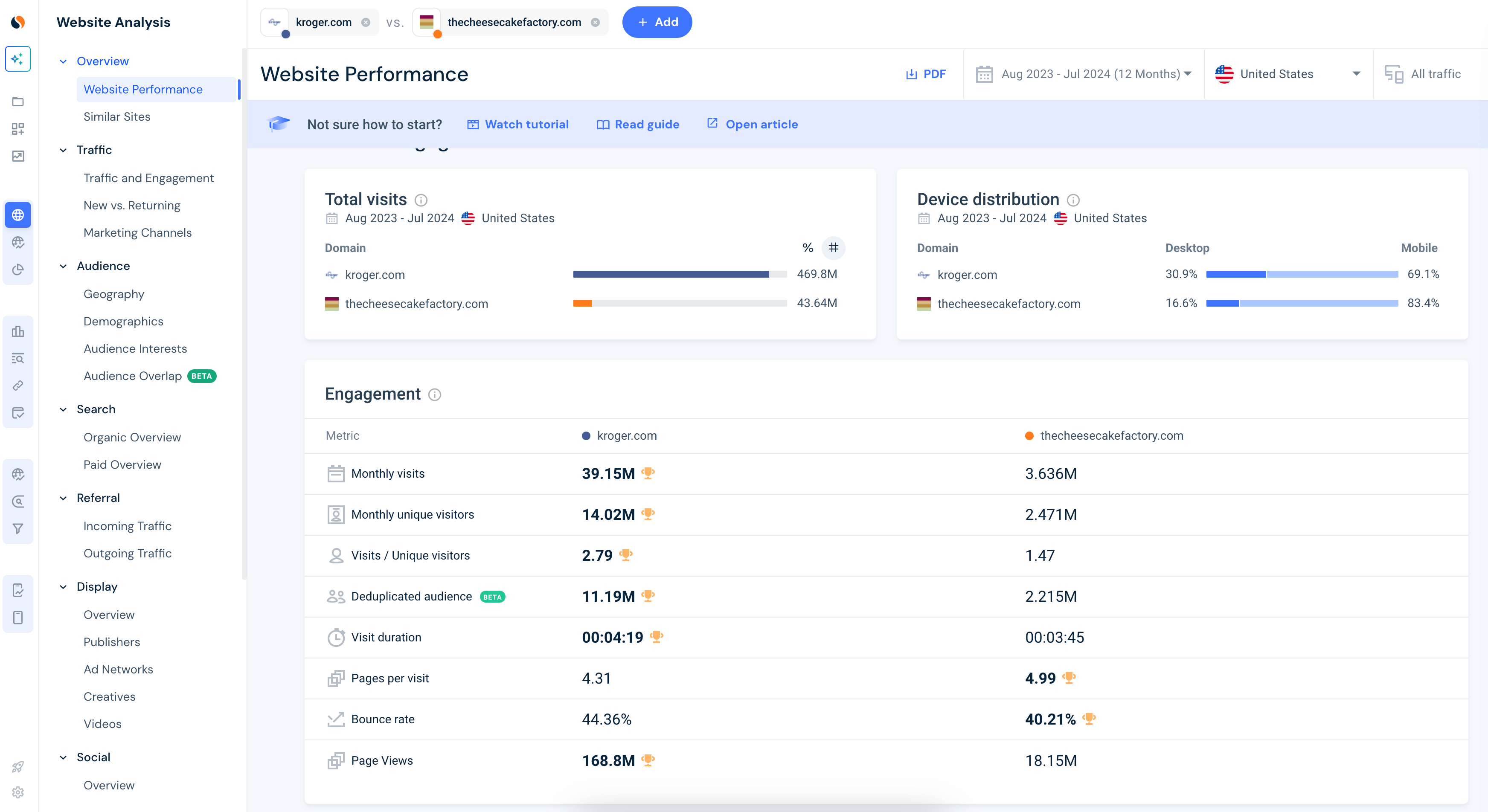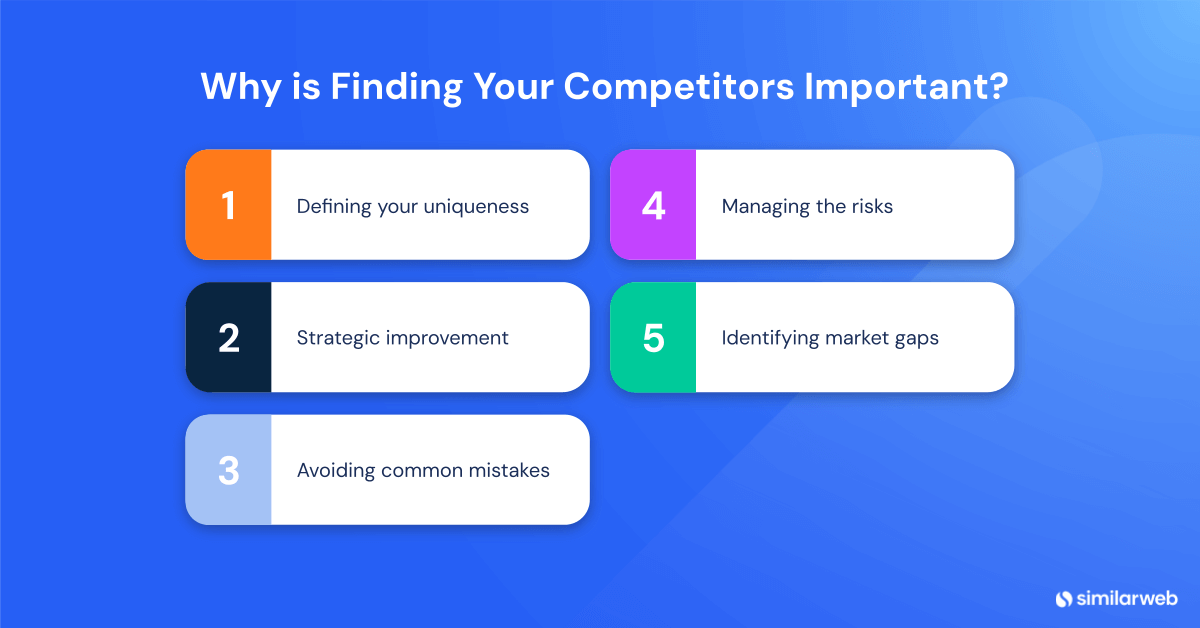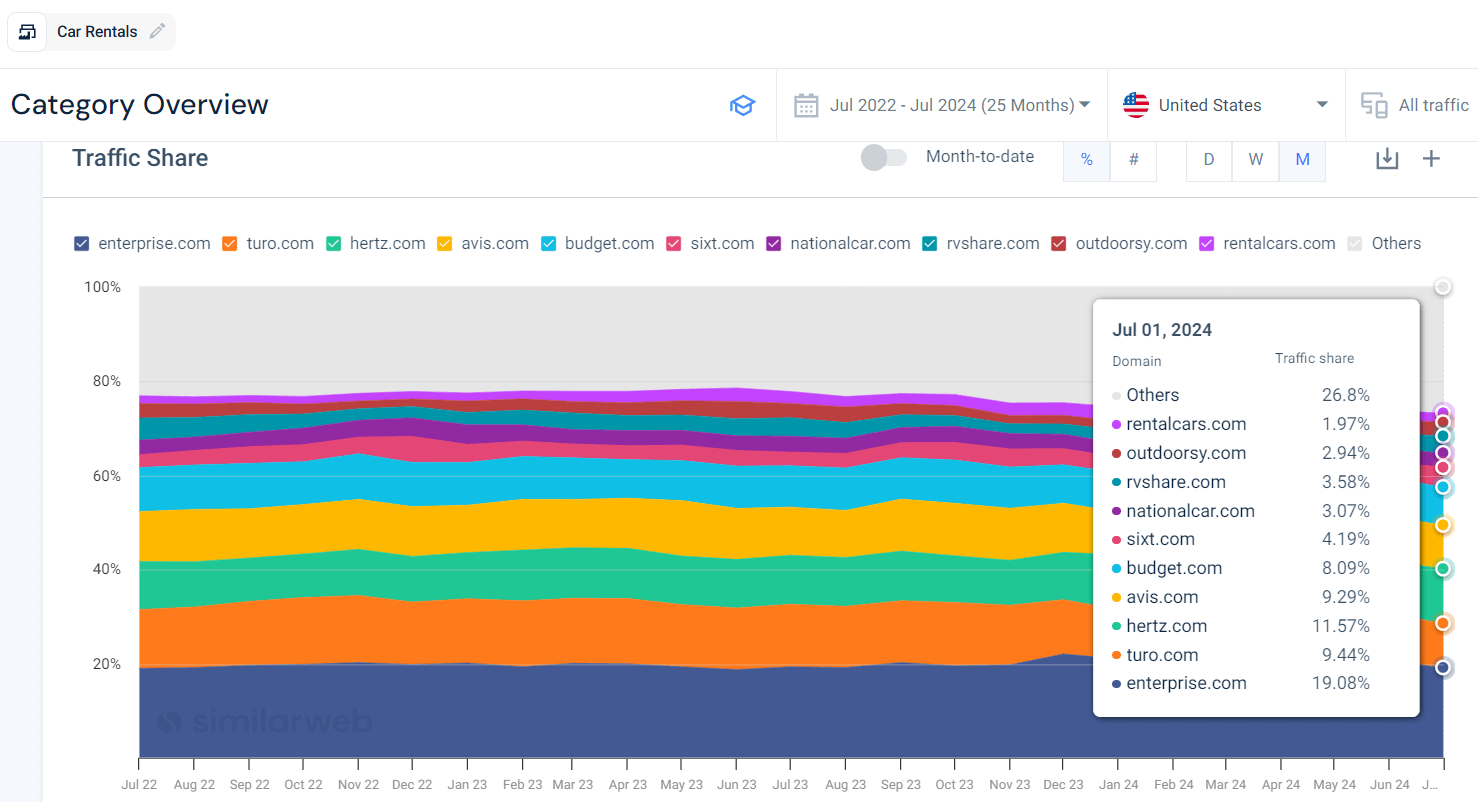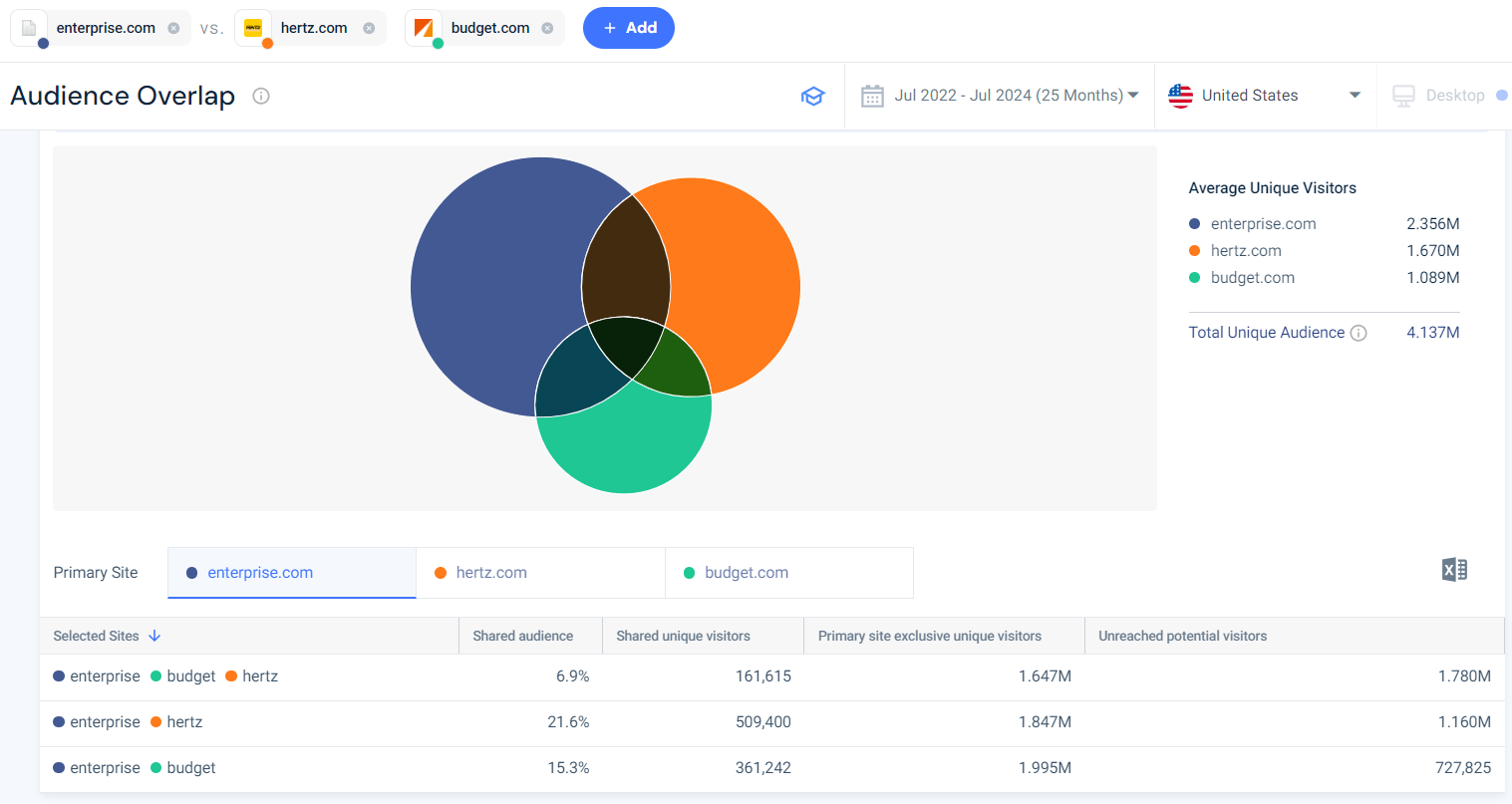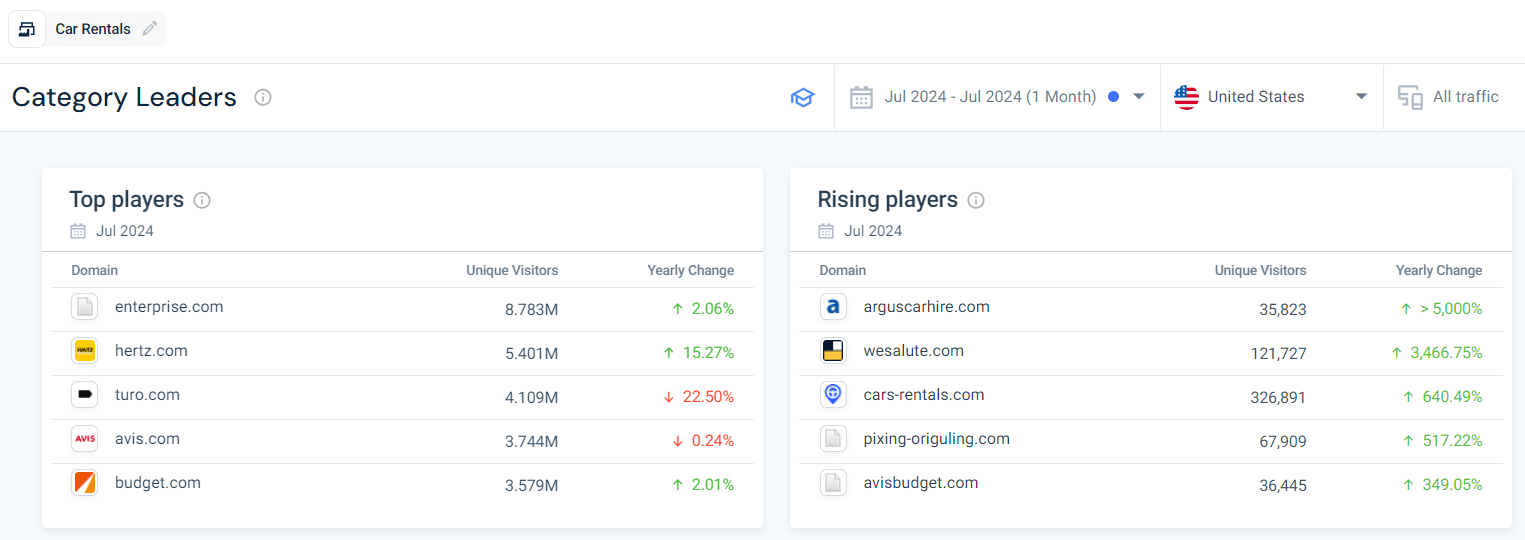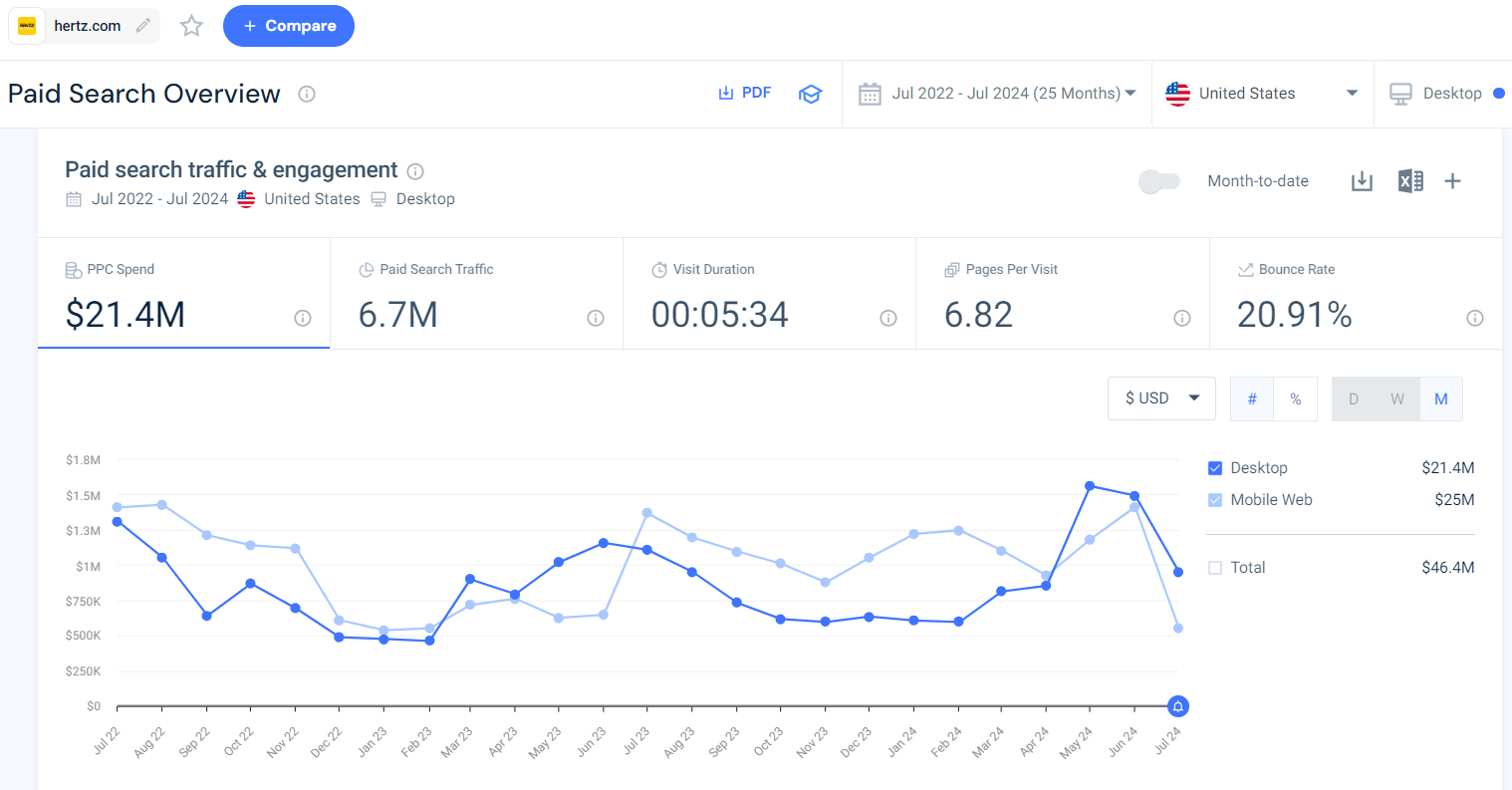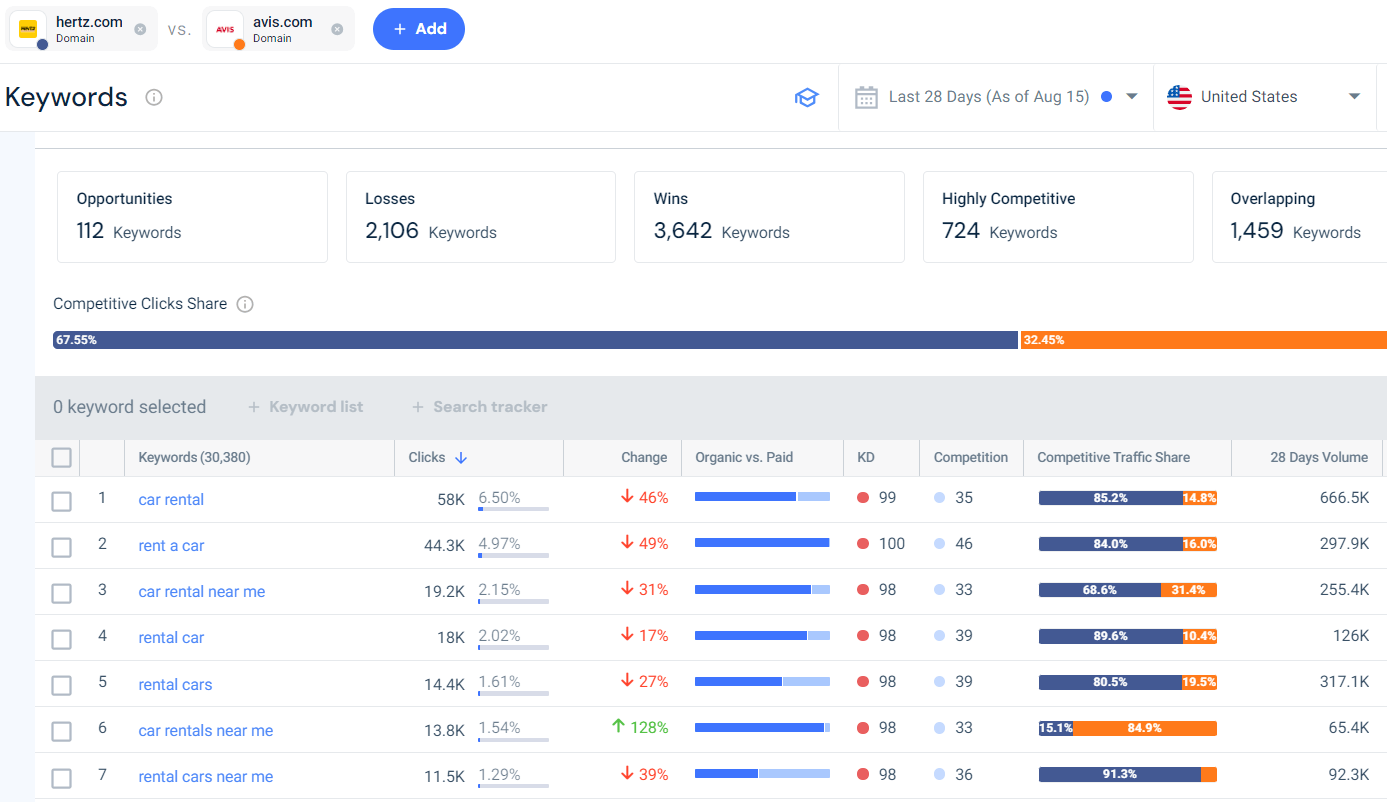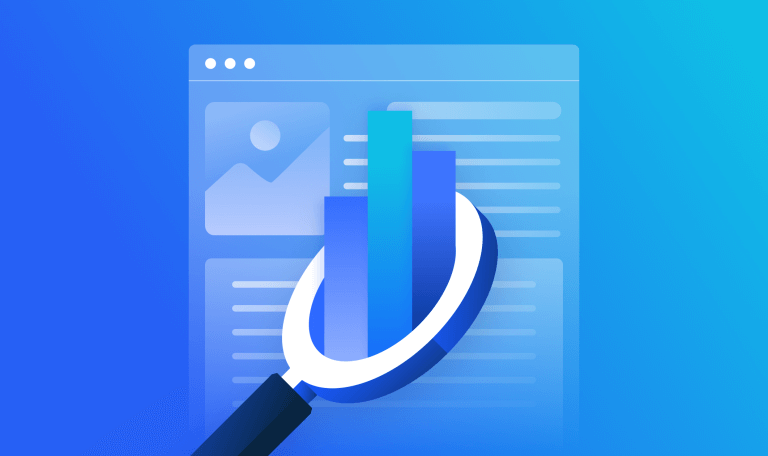 Marketing Intelligence
Marketing Intelligence
Find Competitors of Your Company Using Smart Strategies

Every successful business keeps a keen eye on the competitive landscape. Whether you’re a small bakery or a fast-growing tech company, understanding your competition is crucial for measuring performance and adapting to market changes.
By identifying your rivals, you gain insights into marketing, sales, conversion, and retention strategies – giving you the tools to innovate and grow. Knowing your competitors helps you stay ahead of the curve, ensuring your strategies remain dynamic and that you’re able to ensure the growth and retention of your market share.
Types of competitors: Direct and indirect
Knowing the types of competitors you’re up against is one of the ways to ensure complete market research. Generally, competitors are categorized into two main groups: direct and indirect.
Direct competitors
Direct competitors offer the same product type to the same target market. For example, consider Apple and Samsung in the context of smartphones aimed at technologically savvy consumers. Analyzing your direct competition provides valuable insights into their pricing strategies, customer engagement, and product features. By studying similar companies, you can learn from their strengths and weaknesses, allowing you to refine your own offerings and marketing strategies.
As seen in the screenshot above, samsung.com and apple.com in the UK enjoy very similar traffic volumes and seasonal trends. This illustrates the intense competition between these direct competitors.
Indirect competitors
Indirect competitors fulfill the same customer needs with different products. For example, a supermarket giant such as Kroger selling pastries in its bakery section is an indirect competitor to a specialized bakery like The Cheesecake Factory, which focuses on signature cheesecakes. Identifying these indirect competitors helps you recognize the substitute solutions customers may turn to, such as a café offering fresh pastries as part of a breakfast package. This broader perspective allows you to understand market shifts and strategize on how to stay ahead in meeting the various needs of your target audience.
As seen above, kroger.com and thecheesecakefactory.com in the US have very different traffic volumes and engagement metrics, as this comparison is not an apples-to-apples between two direct competitors. A more detailed analysis could focus on the traffic volume and online sales of cakes at Kroger to assess how much competition it presents to The Cheesecake Factory.
Why is finding your competitors important?
Understanding who your competitors are, what they offer, and how they compare to your products or services can benefit your business in several ways:
1. Defining your uniqueness
Knowing your digital landscape enables you to highlight what makes your product or service unique. This differentiation attracts customers seeking the distinct features you offer. By understanding your competitors, you can craft powerful messaging and positioning that make your unique selling points stand out. This differentiation also allows you to establish a strong brand identity and loyal customer base.
2. Strategic improvement
Keeping track of your competitors’ performance can inspire new ideas and directions for your business. You can adapt and improve upon the successful strategies they use in marketing, product launches, and customer engagement. These insights can lead to innovative approaches tailored to your business model, keeping you competitive and relevant.
3. Avoiding common mistakes
Learning from your competitors’ mistakes can save your business from costly errors. By monitoring where others have failed – whether in product development, customer service, or market entry – you can avoid similar pitfalls. This proactive approach reduces risk and helps you make better decisions.
4. Managing risks
A deep competitor analysis can highlight market risks and guide you in adopting measures to protect your business. Recognizing how your competitors react to economic movements, regulatory changes, or new trends will, consequently, allow you to be better prepared for challenges within your sector. With this foresight, you can develop contingency plans and strategic responses that ensure long-term stability in an unpredictable market.
5. Identifying market gaps
Researching competitors can reveal untapped market and consumer needs, presenting new opportunities for innovation. By evaluating their products and customer feedback, you can identify gaps that your business can fill. This gives you a competitive edge and opens up new revenue streams.
How to find the competitors of a company
Competitor awareness is critical in a competitive market. Whether launching a new business or refining your current strategies, knowing your rivals is the first step to gaining a competitive advantage.
Here’s a quick guide on how you can discover both direct and indirect competitors:
Identify the top companies in your industry
Start by identifying the major players in your market. Using market analysis you can gain an overview of your top competitors based on website traffic, engagement rates, and audience demographics. This data provides a clear picture of current market preferences and trends. For example, if a competitor consistently attracts high traffic, it may indicate effective marketing strategies or appealing product offerings.
First, uncover your industry’s top players by:
This data gives a clear picture of the latest market preferences and trends. For instance, if you notice one of the competitors constantly having high volumes of traffic, you can quite easily tell that its marketing strategies or line of products appeals to the market.
Once you identify these players, compare their market share amongst them on specified time frames. Knowing how the influence of a certain competitor is growing or declining gives you an insight into their strategies and the reception of the market. A growth trajectory could indicate an effective marketing campaign, an expansion into new markets, or a new product launch.
Similarweb’s Audience Overlap feature can also be very useful. This will show you the competitors who are focusing on the same markets that you’re targeting, thus representing competitive intensity in specific niches. In demographic engagement overlaps, you are informed of potential areas where you need to strengthen your customer retention strategies.
Having all the information in hand helps you adapt and innovate to be in line with what works in the market. It will help you avoid falling into pitfalls and save you from the same challenges your competitors have to meet. And now that you are aware of the top players in your sector, you have a strong foundation for your competitive strategy.
Explore the top players
Market monitoring requires a dynamic nature and should always be attentive to emerging or falling competitors. Similarweb’s Market Players feature gives you extensive information on changing trends and metrics, which in turn allows businesses to remain informed about market developments.
One of the ways to identify rising and falling players is by analyzing traffic patterns. Monthly and yearly traffic data give insight into the market momentum of a particular competitor. For instance, if the traffic to one of your competitors has been gradually moving up, it could be a signal that they are doing well in user acquisition and retention, maybe because of their marketing campaigns or new product releases.
Another important metric is branded search volume. This data shows how your competitors’ brands are searched for online and show their power and popularity. An increase in search volume may indicate growing public interest and could be the result of favorable media coverage or intensified marketing efforts.
Finally, PPC spend will give you insight into the investments made by a competitor in paid search campaigns. Higher PPC spending shows marketing aggressiveness to capture market share. You will understand where and how much competitors are investing in paid search; this will yield you insights about priorities and strategic direction.
Together, all these metrics will provide you with a better overview of what the opponents are doing and how they are growing. Regular monitoring helps you identify potential threats at the earliest time possible and helps you capitalize on new opportunities ahead of your competitors. For example, if you see a trend from a competitor’s traffic source heading downward, this would be a great time to step up your marketing to take over the share they are losing.
Discover new search competitors you might be missing
Reviewing your search competitors regularly lets you track their new entrants and shifting dynamics. Using Similarweb’s Search Competitors feature can help you delve deep into common keywords, organic traffic, and paid traffic to get an all-rounded overview of the competitive landscape.
Part of competitive analysis includes identifying domains that are ranking for the same keywords as your site. A shared keyword ranking shows that there is direct competition and illustrates possible areas of weakness in your SEO strategy. For example, if a new player is ranking above you for a very important keyword, it would be wise to check through their content strategy and backlink profile.
Apart from top keywords, an analysis of keyword gaps will tell you which competitors are competing for the same market segments. The overlap between the competitors points to the most significant threats and opportunities for your business so that you can proactively adjust your strategies. Shared keywords light up content gaps that your rivals fill, giving you the chance to improve in this area.
It’s also key to look at how their traffic is split between organic and paid sources. Generally speaking, organic traffic is a great indicator of the long-term effectiveness of content, while paid traffic may indicate a competitor’s immediate market reach efforts. Knowing this balance will further refine how you define strategies to optimize your traffic acquisition. You might decide to focus more on SEO if you see that it represents a high percentage of competitor traffic and holds top search rankings.
Being able to identify new competitors that you simply weren’t aware of can be a real eye-opener. After all, those new entrants could be sowing new perspectives and even pioneering new products or services that could rock the current market. You should remain alert and always update your knowledge about search competitors to maintain relevant competitive strategies.
Create a list for competitive tracking
When one has a comprehensive list of competitors, there is a resulting need to track and manage them, and this can be achieved through Similarweb’s Competitive Tracker tool, which offers continuous monitoring with strategic advantages and features.
You can track up to 25 websites within the Competitive Tracker. This view provides broad coverage of the competitive landscape, which is important for long-term strategic planning. By tracking these websites, you’ll be one step ahead on changes in traffic, shifts in user engagement metrics, and search rank—giving you a fully rounded insight into the competition.
Another valuable feature available from the Competitive Tracker is custom alerts. These keep you informed about key changes or emerging trends, for example, times when competitor traffic suddenly surges or their engagement rates change. That’s real-time information that lets your business react quicker to market shifts.
The platform also delivers automated insights centered around critical metrics such as:
- Traffic patterns
- Growth trajectories
- Engagement rates
Automation guarantees you get information in good time and context, putting you in a position to make quick data-oriented decisions. Proactive adjustments and maintaining an agile and responsive strategy help in keeping your business aligned with the market dynamics.
Identify and analyze your competitors, and start optimizing your strategy
When you have competitor insights at your disposal, you can turn them into actionable strategies that can propel your business to new heights. By regularly reviewing and analyzing their strategies, you’ll be able to identify the gaps in the market effectively, so you can capitalize on their weaknesses and refine your approach better.
With the help of a competitor analysis tool like Similarweb, you’ll be equipped with data-driven strategies. Whether it is launching a product, expanding into new markets, or optimizing operations, these insights will fuel your decisions.
FAQs
How often should I review my competitors?
At a minimum, review your competitors quarterly. In rapidly changing industries or those with significant market swings, frequent reviews help you stay ahead of competitive shifts. Constant monitoring prepares you to respond quickly to new threats or opportunities.
What does a high PPC spend by a competitor indicate?
A high PPC spend typically signals an aggressive market penetration strategy. It highlights your competitor’s priorities and may suggest that you need to adjust your approach to maintain your market position. This tactic often reflects a push to quickly capture a larger market share.
Does customer feedback help you understand your competitors?
Yes, customer feedback is invaluable. Surveys often reveal other brands customers considered before choosing yours, helping you identify direct and indirect competitors. Feedback also highlights what customers find attractive about your competitors’ offerings, allowing you to refine your own.
Why is it important to monitor a competitor’s organic and paid traffic?
Monitoring both organic and paid traffic provides insights into a competitor’s marketing strategy. Organic traffic indicates long-term engagement, while paid traffic reflects immediate market reach. Understanding their balance helps you identify strengths, weaknesses, and focal points in their strategy.
How can I analyze website traffic to identify competitors?
Tools like Similarweb enable deep analysis of traffic volume, sources, top keywords, and user engagement metrics. This analysis helps you identify websites targeting similar audiences, uncover emerging competitors, and devise strategies to capture a larger market share.
Sources
Your full marketing toolkit for a winning strategy
The ultimate solution to help you build the best digital strategy

